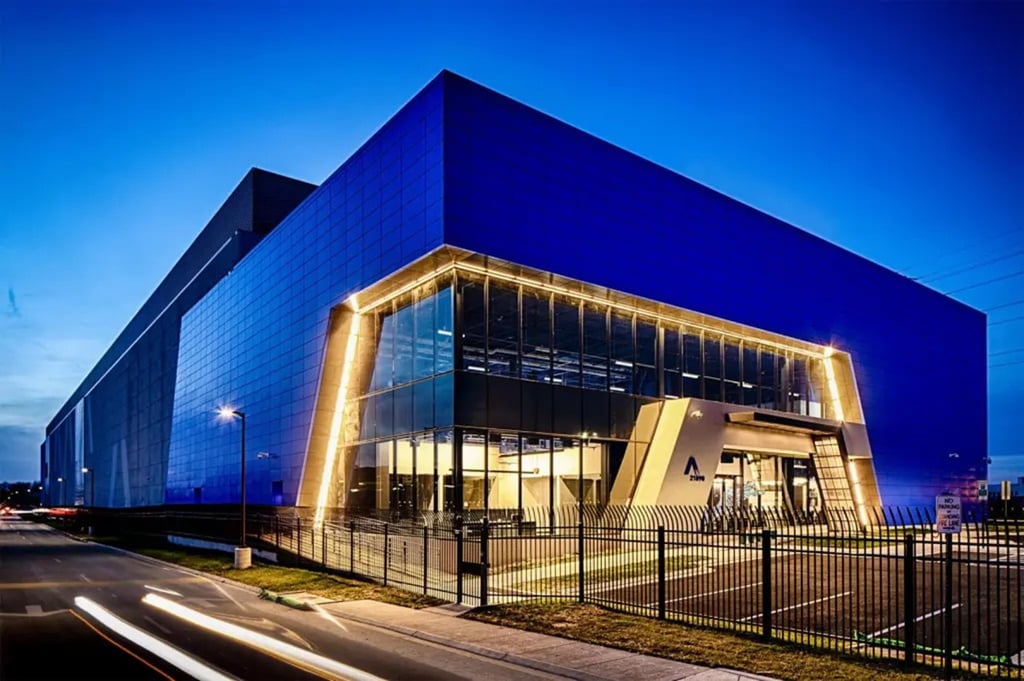A hyperconverged infrastructure (HCI) solution is a primary tool for connecting, managing and operating interconnected enterprise systems in a hyperconverged infrastructure (HCI). The technology helps organizations virtualize storage, servers, and networks. While converged infrastructure uses hardware to achieve this objective, HCI takes a software-centric approach.
To be sure, hyperconvergence has its pros and cons. Yet the advantages are clear: HCI boosts flexibility by making it easier to scale according to usage demands and adjust resources faster and more dynamically. By virtualizing components it’s possible to build more efficient databases, storage systems, server frameworks and more. HCI solutions increasingly extend from the data center to the edge. Many also incorporate artificial intelligence and machine learning to continually improve, adapt and adjust to fast-changing business conditions. Some also contain self-healing functions.
By virtualizing an IT environment an enterprise can also simplify systems management and trim costs. This can lead to a lower total cost of ownership (TCO). Typically, HCI environments use a hypervisor, usually running on a server that uses direct-attached storage (DAS), to create a data center pool of systems and resources. Most support heterogenous hardware and software systems. The end result is a more flexible, agile and scalable computing framework that makes it simpler to build and manage private cloud, public clouds and hybrid clouds.
How to Select the Right HCI Solution
A number of factors are important when evaluating HCI solutions. These include:
Edge-core cloud integration. Organizations have vastly different needs when it comes to connecting existing infrastructure, clouds and edge services. For instance, an organization may require only the storage layer in the cloud. Or it may want to duplicate or convert configurations when changing cloud providers. Ideally, an HCI solution allows an enterprise to change, upgrade and adjust as infrastructure needs change.
Analytics. It’s crucial to understand operations within an HCI environment. A solution should provide visibility through a centralized dashboard but also offer ways to drill down into data, and obtain reports on what is taking place. This also helps with understanding trends and doing capacity planning.
Storage management. An HCI solution should provide support for setting up and configuring a diverse array of storage frameworks, managing them and adapting them as circumstances and conditions change. It should make it simple to add nodes to a cluster and support things like block file and object-oriented storage. Some systems also offer NVMeOF (non-volatile memory express over fabrics) support, which allows an enterprise to rearchitect storage layers using flash memory.
Hypervisor ease of use. Most solutions support multiple hypervisors. This increases flexibility and configuration options—and it’s often essential in large organizations that rely on multiple cloud providers. But it’s important to understand whether you’re actually going to use this feature and what you plan to do with it. In many cases, ease of use and manageability are more important than the ability to use multiple hypervisors.
Data protection integration. It’s important to plug in systems and services to protect data—and apply policy changes across the organization. It’s necessary to understand whether this protection is scalable and adaptable, as conditions change. Ideally, the HCI environment can replace disparate backup and data recovery systems. This greatly improves manageability and reduces costs.
Container support. A growing number of vendors support containers, or plan to do so soon. Not every organization requires this feature, but it’s important to consider whether your organization may move in this direction.
Serverless support. Vendors are introducing serverless solutions that support code-triggered events. This has traditionally occurred in the cloud but it’s increasingly an on-premises function that can operate within an HCI framework.
Here are ten leading HCI solutions:
Jump to:
Leading Hyperconverged Infrastructure Solutions
Cisco HyperFlex HX-Series
The Cisco HyperFlex HX data platform manages business and IT requirements across a network. The solution accommodates enterprise applications, big data, deep learning and other components that extend from the data center to remote offices and out to retail sites and IoT devices. The platform is designed to work on any system or any cloud.
Pros
- The platform includes hybrid, all-flash, all-NVMe, and edge configurations to deliver maximum flexibility and a high level of security, including self-encrypting options.
- It relies on an integrated network fabric, and powerful data optimization features to deliver hyperconvergence to a wide range of workloads and use cases.
- HyperFlex HX is highly scalable.
- The technology supports deep learning on GPU-only nodes.
Cons
- Requires an integrated Cisco network.
- Some users find the pricing model confusing and somewhat high.
- Limitations with analytics.
- Systems configurations and manageability can present challenges.
Visit Cisco HyperFlex
DataCore Software-Defined Storage
Datacore SDS delivers a highly flexible approach to HCI. It offers a suite of storage solutions that accommodate mixed protocols, hardware vendors and more within converged and hyperconverged SAN environments. The software-defined storage framework, SANsymphony, features block-based storage virtualization. It is designed for high availability. The vendor focuses heavily on healthcare, education, government and cloud service providers.
Pros
- Supports mixed SAN, flash and disk environments.
- Handles load balancing and policy management across heterogeneous systems.
- Offers pool capacity and centralized control of primary and secondary storage.
- Strong failover capabilities.
Cons
- Some find the user interface daunting.
- Licensing can be somewhat complex, though the vendor has introduced capacity-based licenses.
- Some users report difficulties obtaining adequate customer support.
Visit DataCore Software
Dell/EMC VxRail
VxRail delivers a fully integrated, preconfigured, and pre-tested VMware hyper-converged infrastructure appliance. It delivers virtualization, compute and storage within a single appliance. The HCI platform takes an end-to-end automated lifecycle management approach.
Pros
- Delivers a single point of support by default for all software and hardware.
- Cloud based multi-cluster management and intelligent upgrade staging.
- Strong Kubernetes support.
- Offers a lockstep 30-day synchronous release with VMware vSphere
- Users report low total cost of ownership
Cons
- Limited support for mixing older flash clusters and hyper-clusters.
- Users report some manageability challenges, such as setting up naming schemas.
- Can be somewhat pricey, depending on the IT environment and use case.
Visit Dell/EMC VxRail
HPE SimpliVity
HP Enterprise aims to take hyperconverged architectures beyond the realm of software-defined and into the world of AI-driven with SimpliVity. The HCI platform delivers a self-managing, self-optimizing, and self-healing infrastructure that uses machine learning to continually improve. HP offers solutions specifically designed for data center consolidation, multi-GPU image processing, high-capacity mixed workloads and edge environments.
Pros
- Offers strong storage management, backup and data replication capabilities.
- Offers a single well-designed interface for the entire solution.
- Strong partner relationships, including SAP, Microsoft, Citrix, VMware and Docker.
- Highly scalable and flexible without a penalty for availability.
Cons
- Some users encounter difficulties moving SimpliVity clusters within the platform.
- Can be pricey, depending on the use case.
- Some users complain about the lack of customer and technical support.
Visit HPE SimpliVity
NetApp HCI
NetApp HCI consolidates mixed workloads while delivering predictable performance and granular control at the virtual machine level. The solution scales compute and storage resources independently. It is available in different compute and storage configurations, thus making it flexible and scalable across data center, cloud and web infrastructures.
Pros
- Delivers strong manageability, granular controls and a high level of flexibility for HCI within a single pane of glass.
- Automates numerous functions with a strong API framework and ecosystem.
- Handles numerous types of workloads, including VMware, SQL, Oracle, SAP, Citrix and Splunk.
Cons
- Installation and initial cabling can be challenging.
- Users complain that documentation is sometimes lacking.
- Some users complain about inadequate security controls and the lack of integration with other security solutions.
Visit NetApp HCI
Nutanix AOS
Nutanix offers a fully software-defined hyperconverged infrastructure that provides a single cloud platform for tying together hybrid and multi-cloud environments. Its Xtreme Computing platform natively supports compute, storage, virtualization and networking—including IoT—with the ability to run any app at scale. It also supports analytics and machine learning.
Pros
- Offers a feature-rich platform that can be applied at scale. The platform is especially adept at handling data compression and deduplication.
- Strong and easy-to-use management capabilities through a single user interface.
- Provides automated application management in a full-cloud stack.
- Users report excellent technical support
Cons
- Among the more expensive solutions on the market.
- Users report some problems with complexity and using networking functions, including encryption and micro-segmentation.
- Users report some difficulties integrating older legacy systems with the HCI environment.
Visit Nutanix AOS
StarWind HyperConverged Appliance
StarWind offers a HCI appliance focused on both operational simplicity and performance. It bills its all-flash system as turnkey with ultra-high resiliency. The solution, designed for SMB, ROBO and enterprises—aims to trim virtualization costs through a highly streamline and flexible approach. It connects commodity servers, disks and flash; a hypervisor of choice; and associated software within a single manageable layer.
Pros
- The appliance is highly scalable. It supports numerous disks and flash components, and easily scales by adding extra nodes.
- It offers attractive pricing and low TCO.
- The vendor’s ProActive support framework spots abnormalities and anomalies through persistent monitoring and machine learning.
Cons
- The vendor’s Linux interface isn’t as developed and mature as the Windows interface it offers.
- Some complaints from users about the interface and manageability functions.
- Users say documentation could be more complete.
Visit StarWind HyperConverged Appliance
StarWind Virtual SAN
StarWind Virtual SAN is essentially a software version of the vendor’s HyperConverged appliance. It eliminates the need for physically shared storage by “mirroring” internal hard disks and flash between hypervisor servers. The approach is designed to cut costs for SMB, ROBO, Cloud and Hosting providers. Like the vendor’s appliance, StarWind Virtual SAN is a turnkey solution.
Pros
- Offers a powerful control panel with insight into the status and health of the VSAN.
- Uses data locality and server-side caching to deliver high performance and fault tolerance.
- Delivers low overhead and maintenance costs.
- Users praise the vendors ProActive support, which spots abnormalities and anomalies through monitoring and machine learning.
Cons
- Some users complain that the licensing framework can be difficult and somewhat restrictive.
- Lacks some features required for larger enterprises with more complex configurations.
- PowerShell documentation presents challenges for some users.
Visit StarWind Virtual SAN
VMware vCenter Server
The vCenter Server delivers centralized visibility as well as robust management functionality at scale. The HCI solution is designed to manage complex IT environments that require a high level of extensibility and scalability. It includes native backup and restore functions. vCenter supports plug-ins for major vendors and solutions, including Dell EMC, IBM and Huawei Technologies.
Pros
- vCenter can manage up to 70,000 virtual machines and 5,000 hosts across up to 15 vCenter Server instances.
- Offers templates and RESTful APIs to automate set up simplify deployments.
- Includes machine learning capabilities.
- Users praise VMware for streamlined setup, ease of use and performance.
Cons
- Some users find the user interface confusing and difficult.
- A faster HTML5 interface lacks key functionality found in the vendor’s Flex interface.
- Kubernetes functionality only works in the cloud.
- The solution can be pricey. Licensing is typically suitable only for medium and large enterprise.
Visit VMware VCenter Server
VMware vSAN
vSAN is an enterprise-class, storage virtualization solution that manages storage on a single software-based platform. When combined with VMware’s vSphere, an organization can manage compute and storage within a single platform. The solutions connects to a broad ecosystem of cloud providers, including AWS, Azure, Google Cloud, IBM Cloud, Oracle Cloud and Alibaba Cloud.
Pros
- Offers powerful features, scales well and delivers excellent flexibility.
- Excellent user interface.
- Integrates seamlessly with VMware products but also with numerous partners.
- vSAN manages all storage functionality. It eliminates the need for additional storage support.
Cons
- Users cite occasional problems with failure protection and rebalancing components.
- Upgrades and changes can present challenges.
- Expensive relative to other solutions on the market. In many cases, the platform requires licenses for multiple VMware components in order to operate.
Visit VMware VSAN
Stream Analytics Software Comparison Table
| Analytics Vendor |
Pros |
Cons |
| Cisco HyperFlex HX-Series |
· Supports numerous configurations and use cases
· Highly scalable
· Supports GPU-based deep learning |
· Requires Cisco networking equipment
· Pricing model can be confusing
· Some users find manageability difficult
|
| DataCore Software-Defined Storage |
· Supports mixed SAN, flash and disk environments
· Excels with load balancing and policy management
· Strong failover capabilities |
· User interface can be daunting
· Licensing can become complex
· Customer support is inconsistent |
Dell/EMC VxRail
|
· Delivers a true single point of management and support
· Handles multi-cloud clusters well
· Integrates well with storage devices
· Low TCO
|
· Limited support for mixing older flash clusters and hyper-clusters
· Some management challenges
· Sometimes pricey
|
HPE SimpliVity
|
· Strong storage management, backup and data replication capabilities
· Users like the interface
· Strong partner relationships
· Highly scalable |
· Managing clusters can present challenges
· Pricey
· Users cite problems with technical and customer support |
NetApp HCI
|
· Excellent manageability with granular controls
· Strong API framework
· Support for numerous workloads from different vendors
· Highly scalable
|
· Installation and initial cabling can be difficult
· Documentation sometimes lacking
· Users say some security features and controls are missing
|
Nutanix AOS
|
· Feature-rich platform
· Single user interface with strong management tools
· Users report excellent tech support |
· Pricey
· Users report some complexity with using encryption and micro-segmentation
· Can be difficult to integrate with legacy systems |
StarWind HyperConverged Appliance
|
· Highly scalable
· Supports numerous configurations and technologies
· Users report low TCO
· Strong vendor support through always-on monitoring and machine learning |
· Linux interface isn’t as mature as the Windows interface
· Some find the interface difficult
· Users say documentation is sometimes lacking
|
StarWind Virtual SAN
|
· xcellent control panel
· High fault tolerance
· Low overhead and maintenance costs
· Strong vendor support through always-on monitoring and machine learning |
· Licensing framework can be difficult and restrictive
· Lacks some features important for large enterprise
· PowerShell documentation can be challenging |
VMware vCenter Server
|
· High capacity
· Strong APIs
· Machine learning features
· High performance
|
· Interface can present challenges
· Kubernetes works only in the cloud
· Pricey
|
VMware vSAN
|
· Powerful features
· Highly scalable and flexible
· Integrates with numerous partners
· Consolidates storage support |
· User cite problems with failure protection and rebalancing
· Upgrade may present problems
· Pricey. Requires multiple licenses from VMware for various needed modules |









